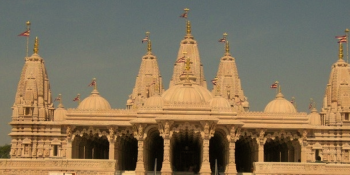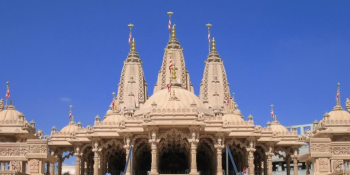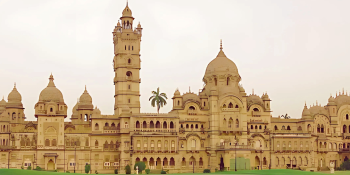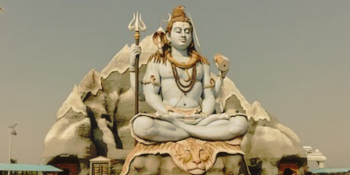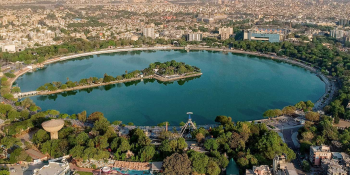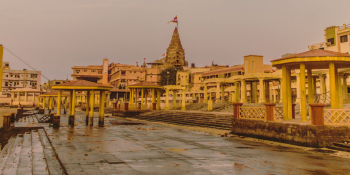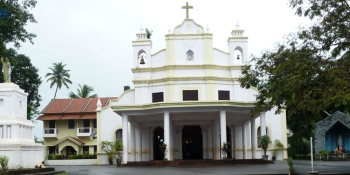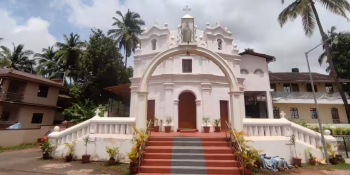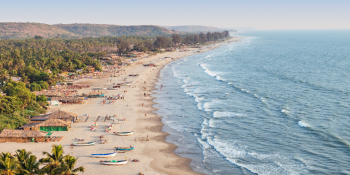Nestled on the banks of the Mandovi River, Panaji, the capital city of Goa, offers a perfect blend of colonial charm, vibrant culture, and natural beauty. Whether you’re visiting for a leisurely vacation, a cultural immersion, or an adventure, Panaji serves as the ideal starting point for your exploration of the coastal paradise. From the city’s well-connected transportation hubs to its rich historical landmarks and bustling streets, Panaji has something for every traveler.
Getting There: The Transportation Hubs of Panaji
Dabolim Airport: Gateway to Goa
Dabolim Airport (GOI), located about 30 kilometers from Panaji, is the main international and domestic gateway to Goa. Serving both commercial and military flights, the airport handles a steady stream of tourists from across the globe. The airport is well-connected to major Indian cities and international destinations. Upon arrival, travelers can find a range of transport options including taxis, private car hires, and buses, ensuring easy access to Panaji and nearby towns like Vasco da Gama, Margao, and Calangute.
With the airport’s modern facilities, duty-free shopping, and food outlets, you can easily start your Goan adventure upon arrival. The drive from Dabolim to Panaji takes about 45 minutes and provides an excellent first taste of Goa’s scenic landscapes. Whether you’re looking for a comfortable ride or an adventurous local transport option, Dabolim ensures that your trip starts on a high note.
The Karmali Railway Station: Connecting Panaji to the World
The Karmali Railway Station, located around 12 kilometers from Panaji, is the closest railway station to the city. Serving as the entry point for many travelers coming to Goa by train, the station offers connectivity to major cities in India, including Mumbai, Pune, Bangalore, and Delhi. Trains from Karmali travel across the Konkan Railway route, known for its stunning views of the Western Ghats and the Arabian Sea. While Karmali is not as busy as other railway stations in India, it offers a more relaxed entry into Goa, where visitors can start to feel the laid-back vibe of the region.
Once you arrive at Karmali, taxis and local buses can take you directly to Panaji in a short 20-minute ride. For travelers keen on experiencing the charm of local transport, hiring a rickshaw can be a fun way to get a first glimpse of Goa’s unique blend of colonial and contemporary influences.
Panaji’s Bus Station: The City’s Roadway Network
Panaji’s Kadamba Bus Terminal, located in the city center, is the key bus station for both local and long-distance travel. The bus station serves as a hub for intercity and interstate buses, offering frequent services to various parts of Goa and neighboring states. If you are traveling from cities like Mumbai, Pune, or Bangalore, the bus services provide an affordable and efficient mode of travel.
Local buses in Panaji are frequent and well-maintained, connecting the city with various tourist hotspots like Calangute, Anjuna, and Old Goa. For a more immersive experience, hopping onto a local bus can provide a glimpse into daily life in Panaji, offering a chance to interact with locals while navigating the city’s busy streets.
Panaji’s Rich Cultural and Historical Heritage
Fontainhas: A Walk Through History
One of the most iconic features of Panaji is its heritage quarter, Fontainhas. This picturesque neighborhood, with its narrow, winding lanes, colorful Portuguese-style houses, and vibrant street art, is a living testament to Goa’s colonial past. Fontainhas has retained its old-world charm and remains a must-visit for anyone interested in the rich cultural tapestry of Panaji. The area is also home to several quaint cafes and art galleries, making it a popular spot for both locals and tourists. The famous “Fontainhas Spring” – which is a small water stream running through the neighborhood – is also a charming feature that adds to the tranquility of the area.
Basilica of Bom Jesus: A UNESCO World Heritage Site
Panaji’s proximity to Old Goa makes it an excellent base for exploring some of Goa’s most important religious and historical sites. Among the most famous is the Basilica of Bom Jesus, a UNESCO World Heritage Site, which is located around 10 kilometers from Panaji. Built in 1605, the basilica is renowned for its stunning Baroque architecture and houses the tomb of St. Francis Xavier, one of the founders of the Jesuit order. The church is a place of pilgrimage, drawing visitors from around the world, and is an essential stop for anyone interested in Goa’s colonial history and Christian heritage.
Se Cathedral: The Majestic Cathedral of Old Goa
Another key historical site in the vicinity is the Se Cathedral, one of the largest churches in Asia. This cathedral, dedicated to St. Catherine, was constructed in the 16th century and is a prime example of Portuguese-Gothic architecture. Its golden altars, intricate woodwork, and towering bell make it a must-see for history buffs and architecture enthusiasts alike. Both the Basilica of Bom Jesus and Se Cathedral are located in Old Goa, which was once the capital of Portuguese India and is a UNESCO World Heritage Site.
Miramar Beach: Relaxation and Scenic Views
Just a short drive from Panaji, Miramar Beach is one of the city’s most popular spots for relaxation and beach activities. With its golden sands and clear blue waters, the beach offers a peaceful escape from the hustle and bustle of the city. Visitors can indulge in water sports like parasailing, jet skiing, or simply enjoy a leisurely stroll along the shore. The beach also boasts stunning views of the Mandovi River, especially during sunset, making it a favorite for photographers and nature lovers.
Dona Paula: Where Land Meets the Sea
For travelers seeking a blend of natural beauty and adventure, Dona Paula is another must-visit spot near Panaji. Known for its panoramic views of the Arabian Sea, Dona Paula is a popular destination for boating and water sports. The viewpoint at Dona Paula offers breathtaking views of the coastline and is an ideal location for a romantic evening or a family outing. According to local legend, the place is named after Dona Paula de Menezes, the daughter of a Portuguese nobleman, who is said to have fallen in love with a Goan fisherman.
Goa State Museum: Delving into Goa’s Rich Culture
For those interested in learning more about Goa’s cultural heritage, the Goa State Museum in Panaji is an excellent place to start. Located near the Old Secretariat building, the museum houses a diverse collection of artifacts showcasing Goa’s art, culture, and history, from the prehistoric era to the Portuguese colonial period. It is an educational and enriching experience for visitors who want to understand the evolution of Goa’s unique identity.
A City of Culture, Cuisine, and Nightlife
Panaji is not only about its historical and cultural attractions but also its vibrant lifestyle. The city is known for its lively markets, bustling street food scenes, and laid-back cafés. As the evening sets in, Panaji transforms into a vibrant hub of entertainment, with a variety of local music performances, bars, and clubs offering a taste of Goa’s nightlife. The annual Carnival in Panaji is a highlight, where locals and tourists alike come together to celebrate Goan music, dance, and cuisine.
The city is also famous for its delectable Goan cuisine. From seafood delicacies like xacuti, sorpotel, and recheado to sweet treats like bebinca and doce, Panaji offers a rich gastronomic experience that will leave your taste buds wanting more.
A Destination That Has It All
From its well-connected transportation hubs to its rich cultural heritage and scenic beauty, Panaji stands as one of the most charming cities in India. Whether you’re a history enthusiast, a nature lover, or a beach bum, Panaji offers something for everyone. With its unique blend of colonial influence, contemporary life, and natural wonders, Panaji is a destination that will capture your heart and leave you with unforgettable memories.

